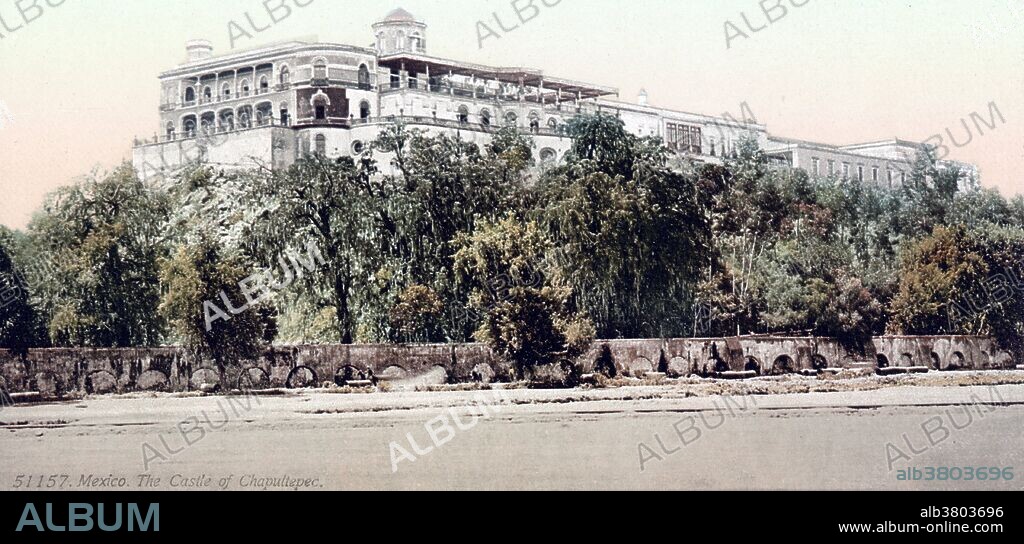alb3803696
Chapultepec Castle, Mexico City, 1884-1900

|
Zu einem anderen Lightbox hinzufügen |
|
Zu einem anderen Lightbox hinzufügen |



Haben Sie bereits ein Konto? Anmelden
Sie haben kein Konto? Registrieren
Dieses Bild kaufen

Titel:
Chapultepec Castle, Mexico City, 1884-1900
Untertitel:
Siehe automatische Übersetzung
Chapultepec Castle (Castillo de Chapultepec) is located on top of Chapultepec Hill. The site of the hill was a sacred place for Aztecs, and the buildings atop it have served several purposes during its history, including that of Military Academy, Imperial residence, Presidential home, observatory, and presently, the Museo Nacional de Historia. It is the only Royal Castle in North America. The castle started to acquire its current look during the Second Mexican Empire, when Emperor Maximilian I of Mexico and his wife Empress Carlota chose it as their residence and the seat of their Court in 1864. The Emperor hired several European and Mexican architects to design the several projects, which followed a neoclassical style and made the palace more habitable. Botanist Wilhelm Knechtel was in charge of creating the aerial garden located on the roof of the building. Additionally, the Emperor brought from Europe countless pieces of furniture, objets d'art and other fine household items that are exhibited to this day. Detroit Publishing Company circa 1884-1900.
Bildnachweis:
Album / LOC/Science Source
Freigaben (Releases):
Model: Nein - Eigentum: Nein
Rechtefragen?
Rechtefragen?
Bildgröße:
4800 x 2301 px | 31.6 MB
Druckgröße:
40.6 x 19.5 cm | 16.0 x 7.7 in (300 dpi)
Schlüsselwörter:
 Pinterest
Pinterest Twitter
Twitter Facebook
Facebook Link kopieren
Link kopieren Email
Email
